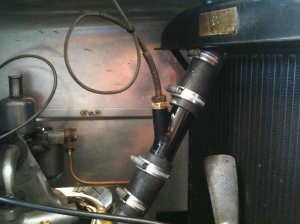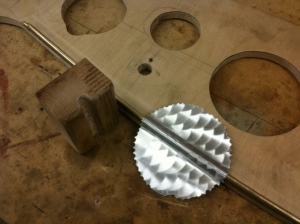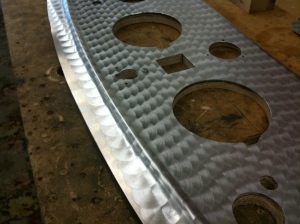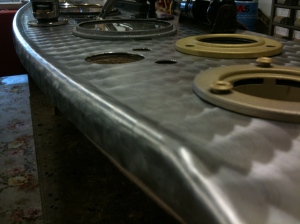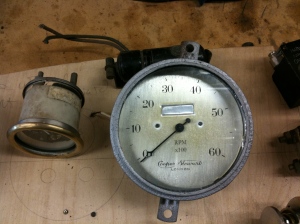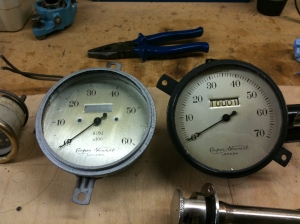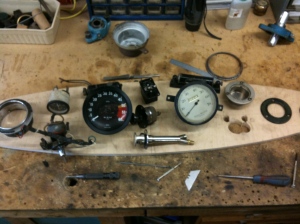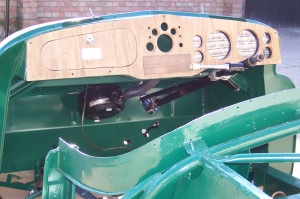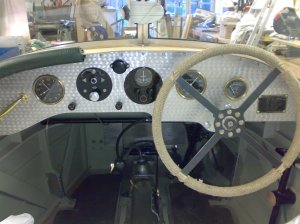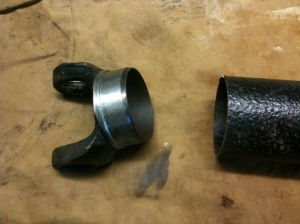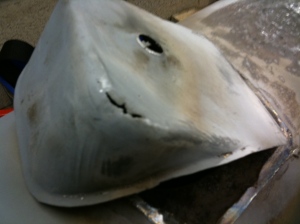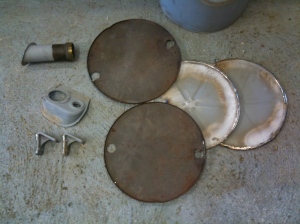I managed to get a few small jobs done and those took a whole Sunday. I know I had a lunch appointment and some chums dropped round for tea but, where do the hours go?
The first job was the water temperature probe housing. There’s provision for an electric sender unit in the radiator but Learned Counsel gave me an analogue gauge that’s more suited to the style of the car. The only problem was where and how to place the probe. I quickly discovered that there wasn’t enough room in the thermostat housing (I’d originally planned to drill and tap for the BSP fitting) so the only other place was in-line with the inlet to the radiator. The brass tube I had spare from another engine provided the main body and the fitting was brazed to a handy piece of steel tube that was exactly the right size; the 2 parts were then brazed together. It’s not the tidiest job in the world – it was jolly difficult to get at the top of the joint with the TIG torch – but it’s water-tight and much the same as I made for the Austin.
I’d been looking around for a suitable oil pressure gauge but they’ve either been too expensive or the wrong size so in the end I gave up the search and took a modern Smiths gauge (the type that nobody wants) to pieces,
and re-worked the whole thing with new artwork (a bit of license here),
and some bits and pieces from the come-in-handy draw.
I’ll nickel plate the bezel and it’ll look fine.
The fact that the needle doesn’t quite sit at zero was a bit of a miscalculation on my part but as long as the needle goes to more or less the same spot every time, I know I’ve got an engine that’s working. A quick lick of paint on the rev counter bezel to match it up with the speedo,
and the day was gone.
I continue to think about The Monaco Dash and I still can’t see the point of going to Monaco. In my imagination, a Monte Carlo or Bust caper was very much on the menu but since my visit, Monaco and Monte Carlo have rather taken the shine off the idea. Granted that the fun would be in the journey – I’m sure that there’d be adventures to report that would take up several dinners but the destination still needs to have some significance. I gather from friends that in the late 60’s and early 70’s Monaco was worth the effort to get to – I don’t think that’s the case anymore.
Most people I’ve spoken to have much the same opinion about the place as I do. Good, that’s comforting; I was beginning to think that I might be a miserable old so-and-so who’d taken against a perfectly nice place on the basis of there being nowhere to park.
Perish the thought…

